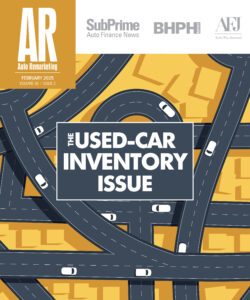COMMENTARY: Connecting the dots with dealership data

Recently, I heard about a dealership customer that ended up with a real lemon of a car. During the customer’s short-lease term, she experienced a series of significant mechanical issues. She completed a dealership survey after every service experience, each time expressing frustration about the vehicle’s quality.
She was never contacted by the dealership until the end of the lease when a polite but uninformed sales person attempted to close a new deal. The interaction, of course, did not go well. While the dealership had access to all of the customer’s history and data, it failed to connect the dots and put together a complete picture of this customer’s experience.
Connecting the dots is something we learn to do at an early age. Children’s puzzles teach us that by making connections between individual points, we can see a more complete picture. Modern car dealerships have countless data points that can overwhelm and puzzle even the most organized managers.
By connecting the dots between individual data points, you’ll begin to see a clear picture of how to improve your business. Through years of experience in the automotive industry, I have developed a simple formula for leveraging customer and financial data to develop strategy and improve performance.
Step 1: Identify an Objective
To start the process of connecting your data dots, consider areas that your dealership needs to improve. Dealerships have too much data for it to be useful when viewed on a grand scale.
Focusing on a specific objective will keep you from becoming overwhelmed by the sheer volume of available data. Because data can be easily segmented by demographic or buying habit, it can be used to predict customer behavior. Maybe you want to reengage customers that haven’t visited your dealership lately or maybe you’re hoping to increase service volume among customers that own multiple cars. Whatever it may be, a clearly articulated objective will help you narrow in on the types of data that might be relevant.
Step 2: Gather Data
Once an objective has been defined, it’s time to dig into the data. Think through what types of data are most relevant and what formats will be most useful. Most DMS and CRM providers allow you to access, organize, and export data in multiple formats.
With a variety of tools available, you’ll need to spend some time learning the platforms with a goal of understanding which systems are best for what jobs. Following an export, test your data against a few known contacts that you would expect to find in your output. This will ensure that you don’t spend time, energy, and money executing on initiatives based on faulty data.
Step 3: Turn Data into Action
Once you’re confident that you have the right data points, start putting together a complete picture of what needs to happen. Data only becomes useful when it informs interactions and processes. Should you adapt your approach to a customer interaction based on their history? Could a customer segment benefit from a targeted marketing campaign?
Could you reduce wait times in your service bay by making a simple operational adjustment? Combine your objective with your data to come up with an actionable plan that makes a difference in your business. Approach data with a problem-solving mindset and you will be amazed at the difference it can make in your business.
Your dealership possesses a wealth of individual data points. That data has the potential to improve your business. But, you need to connect the dots between data points to get a clear picture of what needs to happen. Pick a problem to solve, gather your data, and make a plan. Following these simple steps will prevent your data from becoming an overwhelming puzzle with no benefit to your business.
Sharon Kitzman is vice president and general manager at Dealertrack DMS

 View The Latest Edition
View The Latest Edition

